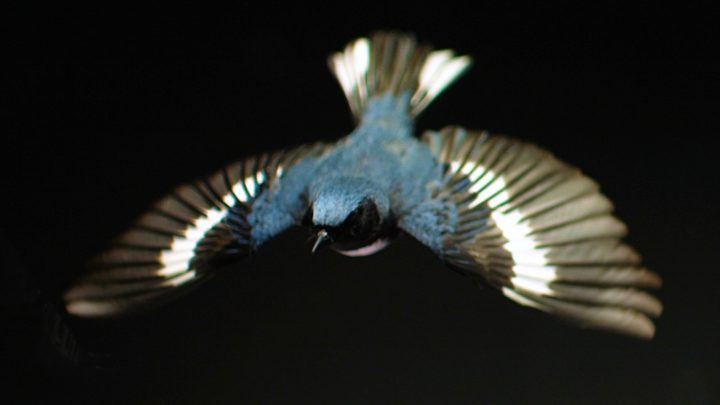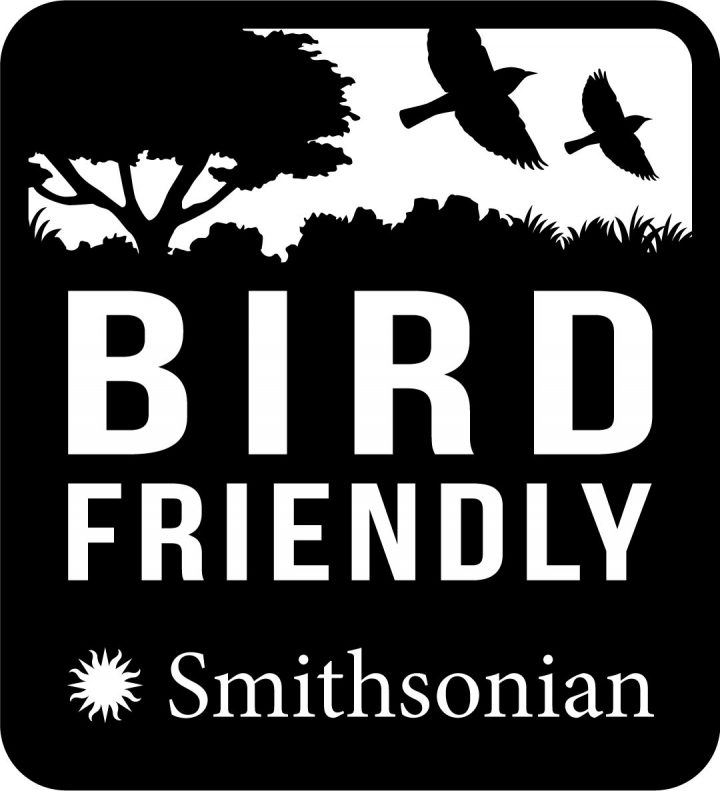7 Things You Can Do to Help Songbirds If You’ve Just Watched The Messenger
By Hugh Powell
November 25, 2015
The Messenger is a 2015 documentary about the problems that migratory songbirds face and the scientists that are trying to help them. The movie is fascinating and beautifully filmed (read our review), but one thing it doesn’t do is address what can be done about the problems.
It’s an intentional omission on the part of the filmmakers—as if they’re saying that the first step is understanding the full scope of what’s wrong, and that’s enough to take up an entire movie. As it turns out, good science can only take us so far. The actions of the general public are also a vital component of change, and it’s through collective effort that we’ll make the biggest difference.
So what can regular folks like us do? Lots. We teamed up with The Messenger‘s filmmakers to bring you this short list of ideas:
1. Make Windows Safer, Day and Night. Some of The Messenger‘s most powerful images are of migrant birds killed by window strikes. Volunteers in Toronto arrange hundreds of brilliantly colored fallen birds—as tiny as hummingbirds and as large as ducks—as stark evidence of the toll that one city’s buildings can take. The toll in North America is estimated at 624 million birds per year, according to the 2014 State of the Birds Report. Although skyscrapers are the most obvious problem, the sheer number of small single-family buildings mean window safety at home is just as important. The issue has two parts: at night, lighted windows attract and kill migrating birds; in daylight windows reflect foliage or sky, encouraging birds to fly into them. Toronto’s Fatal Light Awareness Program can help with the goal of turning out lights at night; our 2015 article Glass Action describes cutting-edge ways to make windows safer for birds.

2. Brew a Bird-Friendly Roast. The film’s camera crews travel to Costa Rica, where many of our forest birds spend winters in semi-open habitats. Shade coffee plantations are one such habitat, in which local people can raise a high-value crop while offering great habitat for birds. Migrants such as orioles, tanagers, and warblers—including the strongly declining Golden-winged Warbler—thrive alongside spectacular tropical residents such as toucans, motmots, and fantastical hummingbirds like the White-necked Jacobin. Buying Bird-Friendly coffee certified by the Smithsonian Migratory Bird Center (from retailers like Birds and Beans) is one of the most direct ways you can fund habitat conservation in the tropics while supporting local economies. Looking for Bird-Friendly coffee instead of brands with a more generic “shade grown” label ensures that the product is organic and conforms to the highest standards of habitat quality.

3. Keep Cats Indoors. The issue of outdoor and feral cats is perennially contentious, but the cumulative effect of millions of outdoor cats is clear-cut. An estimated 2.6 billion birds die in the U.S. and Canada each year when they are caught by cats. “They’re as invasive as West Nile virus, kudzu, zebra mussels,” Smithsonian Migratory Bird Center director Pete Marra tells The Messenger. Outdoor cats also live shorter, more unpleasant lives—they suffer from tapeworms, contract diseases such as herpes and leukemia, are maimed in fights, killed by predators, and run over by cars. Far from being anti-cat, many bird enthusiasts (including Cornell Lab director John Fitzpatrick) have cats as cherished companions—but keeping them inside is good for the cat and good for the local wildlife.
4. Save Half the Boreal Forest. The Messenger pays a visit to the field site of the University of Alberta’s Erin Bayne, deep in the green blanket that stretches across Canada. This vast region is the planet’s nursery for billions of birds—species such as Blackpoll, Blackburnian, Magnolia, Tennessee, Palm, Yellow-rumped Warblers; Gray-cheeked, Bicknell’s, Swainson’s, and Hermit Thrushes; and many others. It’s an ecosystem so big, the film says, that you can watch global carbon dioxide levels drop as the forest wakes up each spring and summer. And yet it’s being nibbled away by timber harvest, energy extraction and other types of fragmentation. The Boreal Birds Need Half campaign is a push by the Boreal Songbird Initiative and partners including the Cornell Lab to ensure that some of this vast wilderness is set aside for the future.

5. Embrace Your Patch. One of the most basic dangers of migration, York University scientist Bridget Stutchbury tells the camera, is the simple problem of landing someplace unfamiliar each day, day after day, during a twice-a-year journey that covers thousands of miles. Each day, is a new round of Where’s the food? Where are the predators? Where’s the shelter, the water? Birds need habitat not just in summer and winter, but in a thread of green connecting the two. That’s where small, individual actions can have a tremendous impact: by restoring modest patches of habitat or banding together to preserve larger patches that offer safe harbor to birds on their long journeys (such as the National Wildlife Refuge system that’s supported by sales of the Duck Stamp). Repeatedly birding a spot (known as “patch birding”) also offers the joy of getting to know an area and its annual cycle intimately—and submitting your records to eBird creates an invaluable baseline of information, too.
6. Lend Your Eyes and Ears to the Cause. Citizen science has become an indispensable tool for monitoring our environment. The observations of skilled, interested people scattered across the world provide data at a scale and level of sophistication that satellites and computer can’t match. If you’re interested in the natural world, chances are there’s a citizen-science project that can benefit from your participation. Try Project FeederWatch, NestWatch, and eBird, or visit Citizen Science Central or Zooniverse for even more ideas.
7. Be a Messenger: Host a Screening. This is a specific suggestion for a recommendation that works more widely: speak up about the issues that concern you, and look for ways to bring people together around causes that deserve attention. Our Celebrate Urban Birds project has lots of ideas and opportunities for community activities that allow people to share the joy of birds and make a connection with nature. If The Messenger isn’t yet scheduled to play near you, their website has directions for how to bring a showing to your community.
All About Birds
is a free resource
Available for everyone,
funded by donors like you
American Kestrel by Blair Dudeck / Macaulay Library

